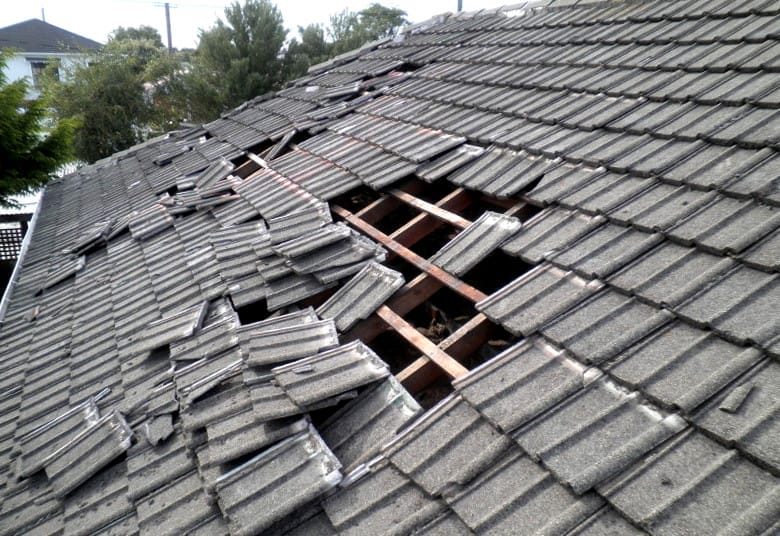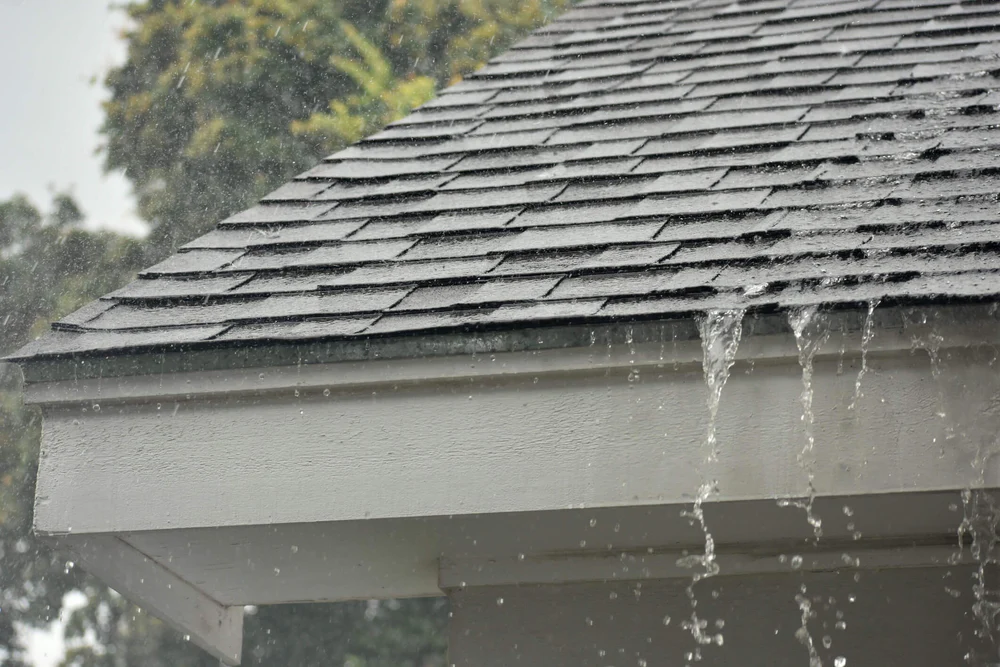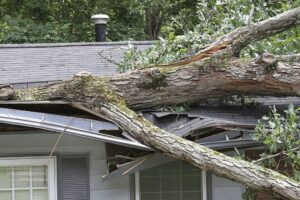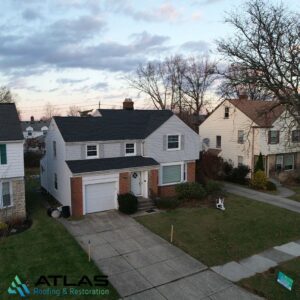Cleveland residents are no strangers to harsh and unpredictable weather. Heavy rainfall, in particular, poses a significant challenge to homeowners, especially when it comes to maintaining the structural integrity of their roofs. Residential roofing systems are designed to withstand a variety of weather conditions, but consistent exposure to torrential rain can lead to serious issues if left unchecked. In a city where rainy seasons are frequent, understanding the common roofing problems caused by heavy precipitation is vital to protect your home and avoid costly repairs.

In this blog, we’ll explore the top roofing issues caused by heavy rain in Cleveland, their warning signs, and preventive measures to keep your home safe and dry year-round.
1. Roof Leaks
One of the most immediate and visible effects of heavy rain is roof leakage. Whether it’s a small drip or a large puddle forming in your attic or ceiling, leaks can lead to serious water damage if not addressed promptly. In Cleveland, older homes with aging shingles or improperly sealed flashing are especially vulnerable.
Common Causes:
- Cracked or missing shingles
- Worn-out flashing around chimneys, skylights, or vents
- Poor roof design or drainage
Signs to Watch:
- Water stains on ceilings or walls
- Damp insulation in the attic
- Mold or mildew growth indoors
Prevention Tips:
- Inspect your roof regularly, especially after storms
- Seal flashing and joints to prevent water intrusion
- Replace aging or damaged shingles promptly
2. Clogged Gutters and Downspouts
Your gutter system plays a crucial role in diverting rainwater away from your home. When gutters or downspouts become clogged with leaves, debris, or granules from worn shingles, water can back up onto the roof, leading to rot and leaks.
Common Problems:
- Water overflow damaging fascia boards
- Roof deck saturation
- Foundation erosion around the home
Prevention Tips:
- Clean gutters twice a year, or more often during fall
- Install gutter guards to block debris
- Ensure downspouts direct water at least 3-5 feet from the foundation
3. Shingle Damage
Cleveland’s heavy rains are often accompanied by strong winds. This combination can loosen, crack, or completely tear away shingles, exposing the underlayment and decking to moisture. Repeated exposure to water can warp or rot the roof structure over time.
Common Signs:
- Curling or buckling shingles
- Shingle granules collecting in gutters
- Bare patches on the roof
Prevention Tips:
- Use high-quality, storm-resistant shingles
- Schedule periodic roof inspections
- Replace damaged shingles immediately
4. Flashing Failures
Flashing is the thin metal material installed around roof features like chimneys, skylights, and vents to prevent water from seeping in. Heavy rain can expose weaknesses in flashing if it becomes corroded, loose, or improperly installed.

Issues Caused by Flashing Problems:
- Leaks around roof penetrations
- Interior water damage
- Accelerated deterioration of roof materials
Prevention:
- Check flashing during roof inspections
- Reseal or replace damaged flashing
- Use waterproof sealants around joints
5. Sagging Roof
When heavy rain persists over time, water may collect in low areas of the roof or saturate materials like wood decking and insulation. This can lead to roof sagging, a structural issue that poses serious risks to the entire home.
Warning Signs:
- Uneven or dipping roofline
- Soft spots when walking on the roof
- Cracking drywall inside the home
Solutions:
- Reinforce or replace the weakened decking
- Improve attic ventilation and waterproofing
- Consult a professional for structural assessment
6. Mold and Mildew Growth
Constant moisture intrusion from heavy rain can create the perfect breeding ground for mold and mildew. Once mold spores take root in insulation, wood, or drywall, they can rapidly spread throughout your home, impacting both the roof and indoor air quality.
Health and Structural Concerns:
- Respiratory issues for occupants
- Wood rot and decay
- Decreased property value
Prevention and Control:
- Ensure proper attic ventilation
- Use mold-resistant insulation and materials
- Address leaks and moisture quickly
7. Soffit and Fascia Damage
Soffits and fascia boards support your roof’s overhang and help protect the attic from moisture and pests. Heavy rain, especially when gutters are clogged, can cause these components to become saturated, swell, and rot over time.
Signs of Trouble:
- Peeling paint or discoloration
- Visible rot or crumbling wood
- Animal or insect infestations
Maintenance Tips:
- Keep gutters clean to avoid water overflow
- Repaint or reseal boards every few years
- Replace damaged wood with water-resistant materials
8. Ice Dams (from Rain-on-Snow Events)
In Cleveland’s colder months, rain falling on snow-covered roofs can lead to the formation of ice dams—a major problem that combines water and freezing temperatures. As rainwater runs off and refreezes at the eaves, it traps water under the shingles, causing leaks and roof deterioration.
How to Prevent Ice Dams:
- Improve attic insulation to reduce heat loss
- Use roof heating cables in problem areas
- Ensure proper ventilation to regulate roof temperature
9. Damaged Roof Valleys
Roof valleys—the V-shaped areas where two roof slopes meet—handle a significant volume of rainwater. If these valleys are not properly sealed or maintained, they can become channels for water to seep into the home during heavy downpours.

Common Issues:
- Cracked or eroded sealants
- Accumulation of debris
- Improper installation
Preventive Measures:
- Clear debris from valleys regularly
- Inspect sealants and underlayment
- Upgrade valley materials to metal or reinforced options
10. Foundation and Interior Water Damage
Though it may not seem directly related to the roof, when rainwater is not effectively channeled away, it can seep down walls or through the foundation, causing damage from the ground up. Poor roof drainage due to faulty gutters or improper slopes can be a silent but costly issue.
Signs of Damage:
- Wet basements or crawl spaces
- Cracks in the foundation
- Mold growth at lower levels
What to Do:
- Ensure roof water is directed well away from the foundation
- Consider installing French drains or a sump pump
- Regularly inspect for moisture intrusion
Why Timely Roof Maintenance Matters
Ignoring small roofing problems caused by heavy rain can lead to extensive damage over time. Proactive roof maintenance not only extends the life of your roof but also protects the overall structural integrity of your home. Given Cleveland’s variable and often wet climate, it’s wise to have your residential roofing system inspected at least once a year and after any major storm.
When to Call a Professional
While some roofing tasks can be handled by experienced homeowners, many of the issues listed above require professional expertise to resolve safely and effectively. If you’re noticing repeated leaks, structural sagging, or significant damage after storms, it’s time to bring in certified roofing professionals.
Protect Your Home with Atlas Roofing & Restoration
Whether you’re dealing with minor leaks or major storm damage, Atlas Roofing & Restoration has the experience and local knowledge to address Cleveland’s unique roofing challenges. Our team specializes in residential roofing solutions, preventive maintenance, emergency repairs, and full roof replacements. With a commitment to quality craftsmanship and honest service, we ensure that your home stays safe, dry, and beautiful—no matter the weather.
Don’t let heavy rain take a toll on your home. Contact Atlas Roofing & Restoration today for a free roof inspection and keep your roof ready for anything Cleveland’s skies can throw at it.




